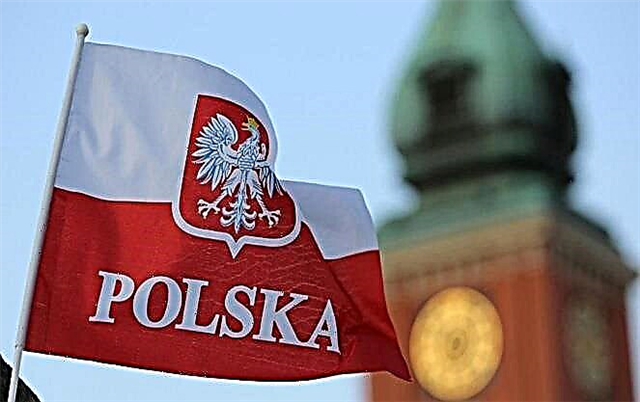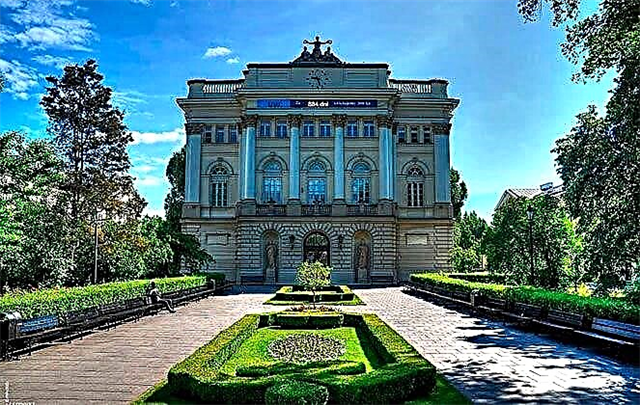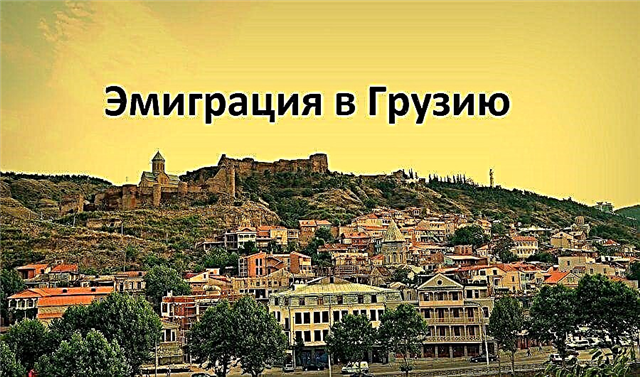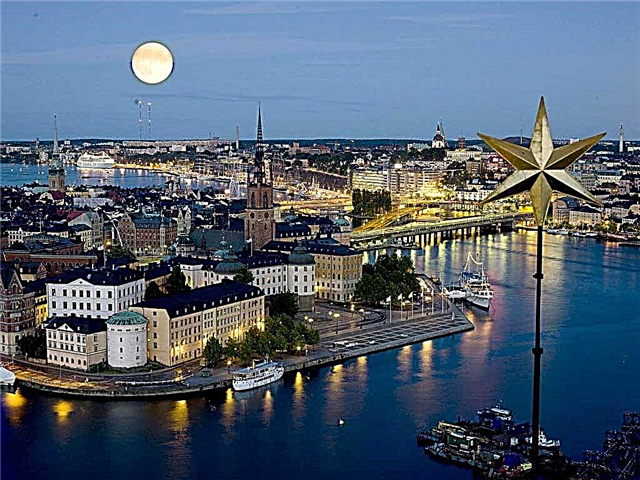Studying in the United States is an opportunity not only to get up-to-date knowledge and a diploma useful for employment, but often also a way to gradually emigrate to the country. Moreover, the larger the city where the university of your choice is located, the more chances you have to find a good job and make useful contacts. Therefore, it is worth considering the most famous universities in New York, familiarizing yourself with the procedure for admission to them and studying the peculiarities of life in this huge city.

Benefits of Studying in New York
One of the main reasons why more and more applicants prefer New York educational institutions is the highest quality of knowledge. This is achieved by hiring qualified teachers, purchasing modern equipment and adjusting curricula taking into account the latest advances in science and business needs.
This is a consequence of the generous funding of universities both from the state and corporations, and from private investors who are members of the boards of trustees of non-state institutions. Therefore, a diploma issued by such a university will open for the graduate the doors of the most prestigious firms and organizations not only in the United States, but also in any other country in the world.
It is important that here, depending on the chosen institution, you can get a high-quality higher education in almost any specialty you are interested in.
An additional bonus to the diploma: in such a large city, it is not difficult to find both a part-time job during training and a full-time job after completing it.
At the same time, it is important for foreign students that in New York there are almost more visitors than locals - the chances of encountering manifestations of intolerance and xenophobia are minimal, but you can always find compatriots and just interesting people.
Such multiculturalism and openness make it easier to adapt to new conditions. And to make it go even faster, you can walk along the streets familiar from childhood through Hollywood films, go to the Metropolitan Museum, have coffee in one of hundreds of thousands of cafes, have a snack in an ethnic restaurant serving your favorite dishes, read something in the reading room New York Public Library, watch the Knicks or Rangers play in Madison Square Garden, get some fresh air in Central Park, go to a concert of some super popular band, or climb with an excursion to the very top of the Statue of Liberty ... One of the most famous cities the world is full of entertainment and attractions for all tastes, no one will be bored here.
The rest of the city infrastructure is also very well adapted to a comfortable life. The metro will help you quickly get from the campus to anywhere in the city (especially since it is most often located in the central part of it). And if you prefer more measured and healthy ways of getting around, there are many bike and walking paths at your service.
Admission procedure
In order not to face unexpected problems, it is worth figuring out in advance how to enter one of the NYC universities. The sequence of steps for applying for admission to most US higher education institutions is almost standard.
First of all, you should decide on the university where you want to go. Then find the official website and register. After that, choose the profession and specialization of interest, as well as carefully study the list of required documents.
 When registering, pay attention to whether your chosen university supports the Common Application and Universal College Application online systems, which allow you to submit identical applications to multiple universities or colleges.
When registering, pay attention to whether your chosen university supports the Common Application and Universal College Application online systems, which allow you to submit identical applications to multiple universities or colleges.
If you are looking to apply for a Master's or Ph.D. degree, then in most cases the use of third-party systems will not be available.
Please note that some universities charge an application processing fee, which usually ranges from $ 20 to $ 150 (look for the Application Free line on the website).
After confirming the application, it remains only to wait for an answer. Typically, the waiting period does not exceed 2 months - during this time you will receive, if not a decision, then a letter with notification of the time frame for making it.
If the university has decided to enroll you in the ranks of students, then you need to immediately confirm your desire to study, ask its representatives for the I-20 form in your name and start preparing a package of documents for obtaining a visa.
What documents will be needed
The specific list of required documents that must be attached to the application may differ in different universities, but it will certainly include:
- A motivation letter or essay is almost the most important document that directly affects the chances of getting a positive decision. It is necessary to explain in detail the motives for choosing a university and a specialty. You will also have to write down career plans (and how they are related to the specialty) and highlight several of your advantages that will help you achieve your goals. A well-written essay can improve your chances of admission, even if your grade point average or test scores are slightly below the bar set by the university.
- Transcript - a list of annual grades starting from the 9th grade, certified by a notary or translation agency.
- Translation of the certificate of complete secondary education.
- IELTS or TOEFL language test certificates.
- SAT Reasoning test unified entrance test certificate. You can rent it in the United States, as well as in licensed institutions in Moscow. Registration for the exam will cost about $ 100, another $ 12 will cost an additional copy of the certificate. If you want to read the detailed commentary of the reviewer about your results, you will have to pay an additional $ 18. Some universities may additionally require applicants to take the SAT Subject Test in one or more disciplines.
- 1 to 3 letters of recommendation from your teachers (depending on the specific university).
- Payment guarantees - training in almost all universities in the United States takes place on a contract basis, therefore, a document is usually required to be attached to the application, in which you or your sponsors will provide guarantees of timely payment of tuition fees.
 If you are looking to enroll in a creative profession like design or architecture, you will also need a well-crafted portfolio. For admission to a master's or postgraduate program, you will additionally need a CV and a translation of a diploma, indicating the successful completion of studies at the previous academic level.
If you are looking to enroll in a creative profession like design or architecture, you will also need a well-crafted portfolio. For admission to a master's or postgraduate program, you will additionally need a CV and a translation of a diploma, indicating the successful completion of studies at the previous academic level.
If you receive a positive decision, then to cross the border and start the educational process you will need:
- valid foreign passport;
- student visa in the USA category F1.
In turn, in order to successfully apply for a visa, you will need:
- Form I-20 Confirming Enrollment;
- a receipt for payment of the consular fee ($ 160);
- invitation from the university;
- a summary of the planned curriculum;
- documents about your education;
- Completed Nonimmigrant Visa Application (Form DS-160)
- document on the state of the bank account;
- medical insurance policy in an American company.
After collecting the entire package of documents, you need to sign up for an interview at the embassy (tel. 8-800-100-2554).
When scheduling an interview, the operator will need to provide your passport number, visa fee receipt number and ten-digit barcode number from the DS-160 application confirmation page.
When you go to your interview, please bring:
- a copy of the invitation received from the embassy;
- a printout of the DS-160 submission page;
- fresh photo;
- international passport.
If the decision on the application is positive, you will receive all documents by mail to the address indicated in the application form.
Most popular New York universities
To make it easier to choose between the many NYC universities, you need to consider all the best universities in New York. To compile the list, the Times Higher Education US College Rankings, student reviews, scale and history of organizations were used.
It is not surprising that the list includes mainly well-known universities that train specialists in a wide variety of fields. The only exception was The New School, which is primarily a research organization, not a learning organization. In the city ranking, it occupies only 45th place, and in the overall ranking of US universities - only 390th.
Despite this modest performance, what makes New School worth mentioning is the fact that it is considered the best place to get a liberal education in New York. The traditions of teaching liberal arts, sociology, philosophy, music (classical and modern) are especially strong in it.
Well, the faculty of Parsons The New School for Design is considered almost the best center for training young designers in the world. Legends of the art world such as Jack Kerouac, Bradley Cooper, Peter Falk and Tennessee Williams have graduated from the New School.
Fordham University
Fordham University in 2021 is going through, perhaps, not the best times, occupying only 24th place among the universities of the city and 212nd in the country. Fordham is one of the few remaining Catholic universities, the rector of which is a Jesuit priest in 2021.
"St. John's College" (as this university was previously called) traces its history back to 1841. The traditions laid down in those years are still alive, so Fordham remains one of the few institutions where every student must take courses in rhetoric, theology and fine arts.
Another feature of the classes is that each student here is obliged to attend at least 4 different foreign language courses, which makes Fordham graduates real polyglots. As a result, a foreign graduate will know at least 6 languages: English, native and 4 more.
The structure of the university has three campuses - in the Bronx, in Manhattan and in suburban West Harrison. In total, more than 1,200 teachers work in them and a little less than 10 thousand undergraduates and about 6,000 undergraduates study.
Almost half of Fordham's applicants successfully become his students.
New York University
New York University is the largest private research and educational institution in the entire United States. It employs a little less than 10,000 people, and about 25,000 future bachelors and the same number of undergraduates study there.
The university was founded in 1831. It is interesting that, perhaps, it was from him that the famous tradition of student fraternities with names from three Greek letters originated.
Despite its scale and legacy, NYU ranks only third in the ranking of the best universities in the city, and in the United States, it settled on the 29th position.
The structure of the organization includes 9 undergraduate schools and 11 graduate schools. The most famous of them:
- L. N. Stern School of Business.
- Polytechnic College.
- Courant Institute of Mathematical Sciences.
- Tisch School of the Arts.
Also noteworthy is the presence of 4 medical faculties at once, namely: the School of Medicine, the College of Dentists, the Nursing College and the Mount Sinai School of Medicine.
NYU alumni include 31 Nobel laureates.
Cornell University
 Cornell University has long chosen the second line of the ranking of universities in New York, and on a US scale, it closes the top ten. Interestingly, most of the buildings of this elite private institution are located not in New York City, but in Ithaca, New York, located at a distance of 280 km from it. In the metropolis there are only medical and technical campuses.
Cornell University has long chosen the second line of the ranking of universities in New York, and on a US scale, it closes the top ten. Interestingly, most of the buildings of this elite private institution are located not in New York City, but in Ithaca, New York, located at a distance of 280 km from it. In the metropolis there are only medical and technical campuses.
The entire structure of the university employs about 9,000 people and studies almost 15,000 undergraduates and 8,000 undergraduates. Physics and chemistry are considered to be the "skate" of this institution. Thus, the specialty "Engineering Physics" regularly won in the individual nomination of the All-American rating.
At the same time, Cornell is one of two New York representatives of the famous Ivy League, which means that the holders of such a diploma are practically guaranteed a cloudless career in the United States.
Among the graduates of this institution are 10 Nobel laureates.
City University of New York
State University of New York is the largest university in the United States. It employs more than 45,000 teachers and about 274,000 students. The structure of the university consists of 25 colleges scattered throughout the city. Despite such a scale, it is not even included in the top twenty in the city and occupies only 272nd place in the all-American rating.
At the same time, there were better times in its history: for example, in the list of its alumni you can find 13 Nobel Prize winners. The university is distinguished by wide autonomy - it has its own internal police force, a TV channel and even a film festival.
Metropolitan College
Metropolitan College is one of the youngest universities in the metropolis, because it was founded in 1964. Embodying the spirit of the rebellious sixties, from the very beginning, the Metropolitan was not like other establishments.
Until 1969, it accepted only women from low-income families, and training courses were associated with paid work practice. In fact, the college was more of a charitable organization than an educational institution.
Nevertheless, by 2021, Metropolitan has become a university with a serious level of knowledge and innovative approaches to the educational process. Metropolitan's structure consists of the College of Education and the Humanities, the Business School and the School of Administration.
St. John's University
St. John's University has another modest ranking: below 30th in the city and 429th in the country. Despite this, it is worth paying special attention to those who see their future in various humanitarian and charitable organizations.
The fact is that, like Fordham, it is a Catholic university. But if in Fordham the influence of the church is manifested in the teaching of classical disciplines, then in St. John's there is still a strong tradition of mercy, and it is this quality that the curriculum tries to instill in students.
University of Buffalo
The State University of New York at Buffalo is a subdivision of a huge state university, the branches of which can be found in almost all major cities of the state. It employs more than 2,000 teachers, almost 20,000 undergraduates and 10,000 undergraduates study.
Initially, this organization was a private medical school, but after it was bought out by the state, the curriculum was first supplemented by a pharmaceutical course, which was then separated into a separate faculty.
Then a law school was added to the medical college. Finally, in 1915, the structure of the organization was supplemented by the Institute of Arts and Sciences.
Columbia University
Columbia University is rightfully ranked first in most rankings of universities in the Big Apple. What's more, it holds an impressive second place nationwide, second only to Harvard. Columbia is a member of the Ivy League, and its alumni include 4 US presidents and 94 Nobel laureates. With such a backlog, a university will not appear soon that can deprive Columbia of the title of the best university in New York.
You can apply to the university on its website. But keep in mind that only 10% of applicants join the ranks of students.
How much is the tuition fee
Of course, the exact cost of a semester of study depends on the specialty and institution. On average, you will have to pay $ 2,500 per month for studying in a bachelor's degree, and a master's degree can cost about $ 3,750 / month. The more prestigious the university, the higher the cost of education.So, at Columbia and Cornell Universities, a month of study will cost more than $ 4,000, while studying in Buffalo will cost a little more than $ 2,000. Interestingly, the religious and not very popular Fordham will not be particularly economical: you will have to pay about $ 3,800 / month there.
At the same time, there is an opportunity to study for free, or at least significantly save money. To do this, you need to receive a grant or scholarship from one of the international programs collaborating with NYC universities.
The most popular grants that cover not only the cost of education, but also part of the cost of flights, accommodation and meals are Fulbright and the Russian state program "Global Education".
Most universities have their own scholarship program, but international students can usually only count on half of the tuition fees. Most often, the condition for obtaining a scholarship is the full implementation of the curriculum.
Another option to study for free is to apply to the Webb Institute, which provides educational services for students unable to pay their own tuition fees. The university has a technical profile with a focus on shipbuilding, and all of its students each year undergo at least 8 weeks of internships at enterprises in the USA, UAE, Greece, China and Holland.
The cost of living in the Big Apple
 New York is regularly included in the top 20 most expensive cities in the world. In 2021, he was in 13th place, and before that he was in the top ten for a long time. It firmly holds the position of the most expensive city in the United States.
New York is regularly included in the top 20 most expensive cities in the world. In 2021, he was in 13th place, and before that he was in the top ten for a long time. It firmly holds the position of the most expensive city in the United States.
Therefore, when preparing to move, it is worth planning an approximate monthly budget in advance so as not to be faced with the need to urgently look for additional sources of funding in the middle of the semester.
Consider the average prices for the most important goods and services.
| Product / Service | Cost, $ |
|---|---|
| Apartment rent (1-room, per month) | 2000 |
| Utilities | 140 |
| Milk, 1 l | 1.2 |
| Eggs, 10 pcs | 3 |
| Bread, 1 loaf | 3.8 |
| Cheese, 1 kg | 15.8 |
| Chicken fillet, 1 kg | 13 |
| Beef, 1 kg | 15 |
| Rice, 1 kg | 6.5 |
| Bottled water, 1.5 liters | 2.4 |
| Apples, 1 kg | 6.2 |
| Bananas, 1 kg | 2.4 |
| Potatoes, 1 kg | 3.3 |
| Tomatoes, 1 kg | 5.9 |
| Fast food snack | 10 |
| 1 pair of jeans | 54 |
| 1 shirt | 40 |
| Traveling on the subway | 2.75 |
| Pass for a month | 120 |
| Medical insurance | 200 |
Thus, taking into account rental housing and food costs, the monthly budget for living in NY can never be less than $ 3,500. It should be borne in mind that most universities provide food and accommodation services on campus.
On average, a hostel will cost $ 1,000 a month, and about the same will have to pay for three meals a day in the dining room.
Useful tips for those wishing to study in New York
Before submitting documents, study the features of the IELTS / TOEFL tests and especially the SAT tests, because their format is strikingly different from the one familiar to Russians. If the university of interest offers preparatory courses online or offline, then it is better to start admission precisely by attending them.
Even the most conservative institutions tend to periodically review various nuances of the educational process. It is worthwhile to carefully study the official website of the university, check the prepared documents with the list of requirements that was up-to-date at the time of receipt and familiarize yourself with the proposed training conditions, and at the same time explore the possibilities for obtaining grants.
To avoid problems with the immigration service, remember that with an F1 visa, you can officially work in the United States for no more than 80 hours a month.
It is also worth considering that New York is a classic city of contrasts, as befits a metropolis, and dazzling luxury here often coexists with poverty and crime. Therefore, when planning walks and trips to the Big Apple, you should avoid visiting relatively dangerous areas like Brownsville (part of Brooklyn), Harlem, Coney Island, South Queens, the Bronx and the vicinity of Jamaica station at night.
You should not get carried away by night travels in Central Park: both because of its huge scale, and because of the frequent cases of robberies and murders in its dark side alleys.
Conclusion
Universities in the largest city in the United States provide graduates with the opportunity to receive quality education that will allow them to make a successful career in almost any country in the world. Of course, you will have to pay for this, and a lot: on average, studying in a bachelor's degree will cost from $ 30,000 / year, and for obtaining a master's degree, you will have to pay about $ 45,000 / year.
In addition, if you are unable to settle on campus, each month of living and studying in New York will cost at least another $ 3,500. If you live in a hostel, you can try to keep within $ 2,000 / month.











